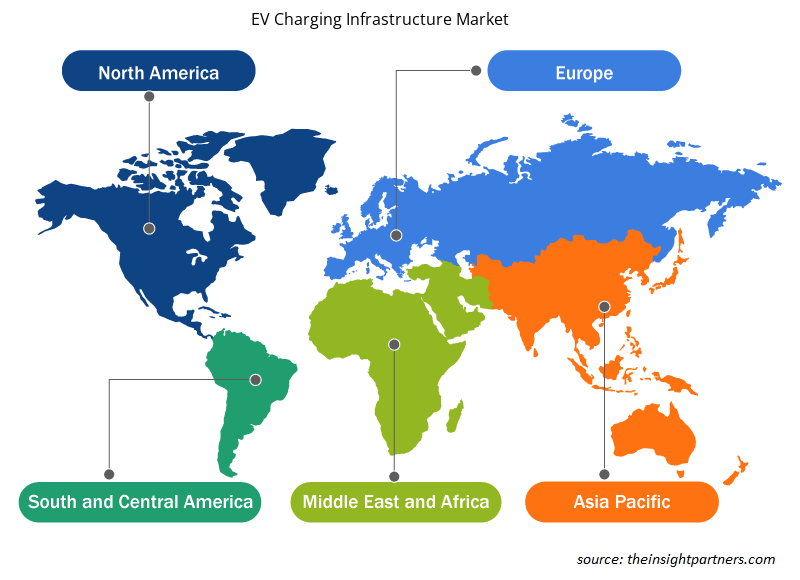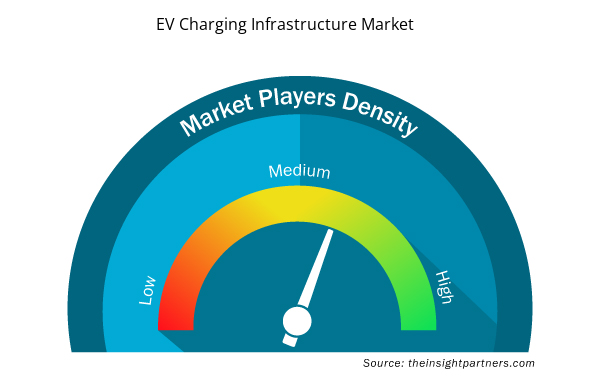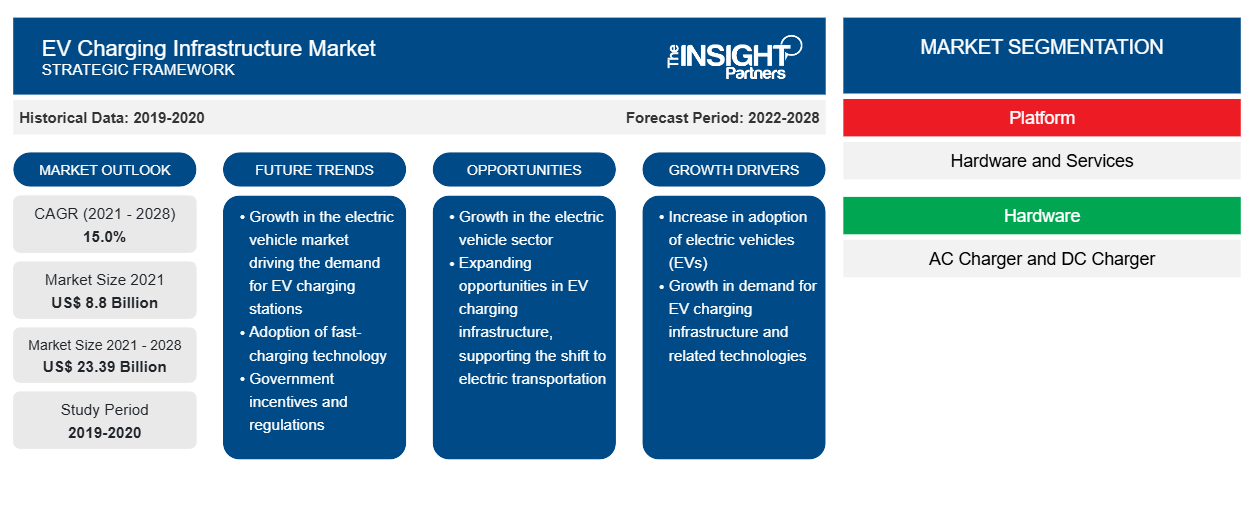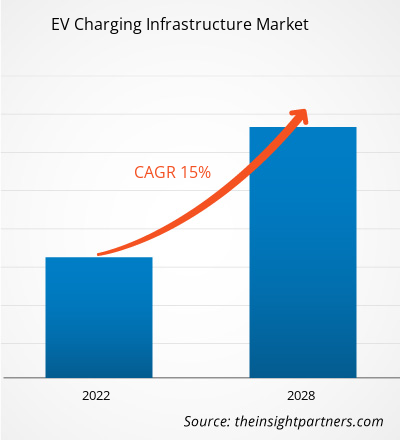[調査レポート] EV充電インフラ市場は2021年に88億米ドルと評価され、2028年には233億9,000万米ドルに達すると予測されており、2021年から2028年にかけて15.0%のCAGRで成長すると予想されています。
アナリストの視点:
電気自動車(EV)充電インフラ市場は、持続可能な輸送手段への世界的な移行に牽引され、近年著しい成長と発展を遂げています。温室効果ガスの排出を削減し、気候変動と闘うために電気自動車の導入を優先する国や政府が増えるにつれ、信頼性が高く効率的な充電インフラの需要が急増しています。EV充電インフラとは、電気自動車の再充電を可能にする充電ステーションと関連技術のネットワークを指します。これらの充電ステーションには、自宅、職場、公共、急速充電ステーションなど、さまざまな形式があります。さまざまな充電ニーズに対応し、EV所有者に利便性を提供するように設計されています。EV充電インフラ市場の主要な推進力の1つは、拡大するEV市場自体です。電気自動車の販売が伸び続けるにつれて、路上のEVの増加に対応するために、堅牢な充電インフラの必要性が重要になります。
さらに、電気自動車の導入を促進する政府の取り組み、補助金、規制は、充電インフラの開発を促進する上で重要な役割を果たしてきました。EV充電インフラ市場には、大手自動車メーカー、エネルギー会社、充電ネットワーク事業者、テクノロジープロバイダーなど、複数の企業や関係者が積極的に関与しています。これらの企業は、革新的な充電ソリューションの開発、充電速度の向上、ユーザーエクスペリエンスの向上に協力しています。急速充電インフラは、長距離旅行や航続距離の不安の軽減に不可欠であり、EV所有者は長距離旅行中に車両をすばやく充電できます。さらに、再生可能エネルギー源を充電インフラに統合することが普及しつつあります。再生可能エネルギーで稼働する充電ステーションは、充電に関連する炭素排出量の削減に役立ち、電気自動車エコシステム全体をより持続可能で環境に優しいものにします。
市場概要:
電気自動車充電ステーションは、プラグインと電気自動車を電源に接続して充電するためのハードウェアです。民間企業や電力会社は、駐車場、ショッピング モールなどの公共エリアに充電ステーションを設置します。3 ピン プラグ、公共充電ステーション、住宅用壁掛けボックス チャージャーはすべて、グリッドから電気自動車を充電するための簡単な方法です。今後数年間、V2G (Vehicle-to-Grid) テクノロジにより、車両の所有者はピーク時に余剰電力をグリッドに再販売できるようになると予想されています。
要件に合わせてレポートをカスタマイズする
このレポートの一部、国レベルの分析、Excelデータパックなど、あらゆるレポートを無料でカスタマイズできます。また、スタートアップや大学向けのお得なオファーや割引もご利用いただけます。
- このレポートの主要な市場動向を入手してください。この無料サンプルには、市場動向から見積もりや予測に至るまでのデータ分析が含まれます。
市場の推進要因:
電気自動車市場の拡大がEV充電インフラ市場の成長を牽引
電気自動車(EV)市場の発展は、EV充電インフラ市場の成長の重要な原動力です。電気自動車のニーズが高まるにつれて、堅牢で広範囲にわたる充電インフラが極めて重要になります。EV市場の拡大にはいくつかの要因があります。気候変動や大気汚染などの環境問題に対する認識と懸念が高まっています。バッテリー容量の向上や走行距離の延長など、EV技術の進歩により、電気自動車の魅力と実用性が向上しました。バッテリー技術が進化し続けるにつれて、EVは性能と航続距離の面で競争力が高まり、走行距離の制限や充電の可用性に関する潜在的な購入者の懸念に対処しています。さらに、自動車メーカーは電気自動車モデルの開発に多額の投資を行っています。自動車業界の大手企業は、さまざまな車両セグメントにわたってますます多くのEVオプションを導入し、さまざまな消費者の好みやニーズに応えています。EV市場の拡大に伴い、包括的な充電インフラの必要性が極めて重要になります。EVの所有者は、車両を簡単かつ効率的に充電するための便利で信頼性の高い充電ソリューションを必要としています。この需要は、EV 所有者が毎日の通勤や長距離移動をサポートするために職場、公共の場、高速道路にある充電ステーションを利用する必要があることから、住宅での充電オプションの範囲を超えています。充電インフラ プロバイダー、エネルギー会社、その他の関係者は、より大規模な EV 車両群のニーズを満たすために充電ネットワークに投資して拡張することの重要性を認識しています。彼らは、政府、自動車メーカー、その他の業界関係者と協力して、拡張可能で信頼性が高く、広く利用できる充電ソリューションを開発しています。
セグメント分析:
プラットフォームに基づいて、EV充電インフラ市場はハードウェアとサービスに分類されます。ハードウェアセグメントは、2020年に最大の市場シェアを占めました。いくつかの要因により、ハードウェアセグメントはEV充電インフラ市場の最大の株主です。さまざまな場所に充電ステーションを展開していることが、その優位性に貢献しています。このセグメントには、充電インフラのバックボーンを形成する充電ステーションの製造、設置、保守が含まれます。レベル1、2、DC急速充電器などの多様な充電ソリューションが、ハードウェアセグメントの市場シェアを牽引しています。充電ハードウェアの技術的進歩と物理インフラ投資の寿命の延長により、その地位はさらに確固たるものになっています。ハードウェアセグメントのより大きな市場シェアは、その資本集約型の性質と、信頼性が高く効率的な充電ネットワークを確立する上での極めて重要な役割を反映しています。
地域分析:
アジア太平洋地域のEV充電インフラ市場は、2021年に39億9,000万米ドルと評価され、2028年までに107億7,000万米ドルに達すると予測されています。予測期間中、年平均成長率15.2%で成長すると予想されています。アジア太平洋地域は、成長と市場シェアに貢献するいくつかの主要な要因を通じて、EV充電インフラ市場で優位性を確立しています。この地域では電気自動車の採用が大幅に増加しており、世界最大かつ最も急速に成長している電気自動車市場となっています。中国、日本、韓国などの国々は、強力な政府支援、インセンティブ、野心的な排出削減目標により、この採用を推進してきました。この成長する電気自動車市場は、EV充電インフラに対する大きな需要を生み出し、この地域の優位性につながっています。アジア太平洋地域は、特に中国や韓国などの国々で、よく発達した製造エコシステムの恩恵を受けています。これらの国々は、充電ステーション、ケーブル、関連部品の製造に多額の投資を行っており、その結果、競争力のある価格で充電インフラが安定的に供給されています。これにより、充電ソリューションの導入が促進され、消費者のアクセス性が向上しました。さらに、この地域は包括的な充電ネットワークの構築に力を入れています。政府と業界関係者は、住宅地、商業施設、公共スペース、主要な交通回廊を含む充電インフラを積極的に拡大しています。この広範囲にわたるネットワークは、電気自動車所有者の利便性とアクセス性を保証し、地域の優位性をさらに強化しています。技術の進歩と革新も、アジア太平洋地域の市場優位性に貢献しています。高出力充電ステーションとスマート充電ソリューションの採用、ワイヤレス充電などの新しい技術の探求により、EV充電の効率とユーザーエクスペリエンスが向上しました。これらの進歩により、より多くの消費者が電気自動車に惹かれ、充電インフラの需要が高まりました。
さらに、この地域の大手企業や市場プレーヤーも重要な役割を果たしています。BYD、NIO、Hyundai、LG Electronics などのアジアのメーカーは、充電インフラに多額の投資を行い、市場範囲を拡大してきました。彼らの専門知識、技術の進歩、そして強力な市場プレゼンスは、アジア太平洋地域の EV 充電インフラ市場の成長に貢献しています。
主要プレーヤー分析:
EV 充電インフラ市場分析には、Tritium、Blink Charging Co.、ChargePoint, Inc.、BP plc、EVBox、EVgo Inc.、Tesla, Inc.、Webasto Group、RWE AG、Delta Electronics, Inc. などの企業が含まれています。EV 充電インフラの企業の中で、Tritium と EVBox は、多様な製品ポートフォリオを提供していることから、トップ 2 の企業となっています。
EV充電インフラ市場地域別インサイト
予測期間を通じて EV 充電インフラ市場に影響を与える地域的な傾向と要因は、Insight Partners のアナリストによって徹底的に説明されています。このセクションでは、北米、ヨーロッパ、アジア太平洋、中東およびアフリカ、南米および中米にわたる EV 充電インフラ市場のセグメントと地理についても説明します。

- EV充電インフラ市場の地域別データを入手
EV充電インフラ市場レポートの範囲
| レポート属性 | 詳細 |
|---|---|
| 2021年の市場規模 | 88億米ドル |
| 2028年までの市場規模 | 233.9億米ドル |
| 世界のCAGR(2021年~2028年) | 15.0% |
| 履歴データ | 2019-2020 |
| 予測期間 | 2022-2028 |
| 対象セグメント | プラットフォーム別
|
| 対象地域と国 | 北米
|
| 市場リーダーと主要企業プロフィール |
|
EV充電インフラ市場のプレーヤー密度:ビジネスダイナミクスへの影響を理解する
EV 充電インフラ市場は、消費者の嗜好の変化、技術の進歩、製品の利点に対する認識の高まりなどの要因により、エンドユーザーの需要が高まり、急速に成長しています。需要が高まるにつれて、企業は提供を拡大し、消費者のニーズを満たすために革新し、新たなトレンドを活用し、市場の成長をさらに促進しています。
市場プレーヤー密度とは、特定の市場または業界内で活動している企業または会社の分布を指します。これは、特定の市場スペースに、その市場規模または総市場価値に対してどれだけの競合相手 (市場プレーヤー) が存在するかを示します。
EV充電インフラ市場で事業を展開している主要企業は次のとおりです。
- デ
免責事項:上記の企業は、特定の順序でランク付けされていません。

- EV充電インフラ市場のトップキープレーヤーの概要を入手
最近の動向:
EV 充電インフラ市場の企業では、合併や買収などの無機的および有機的な戦略が広く採用されています。最近の主要な市場動向をいくつか以下に示します。
- 2022年11月、ユルはカルナタカ州政府とMoU(了解覚書)を締結し、今後5年間で120億インドルピーを投資して電気自動車(EV)10万台の配備と州最大のEVバッテリー充電・交換インフラの運用化を図る計画を発表した。
- ルクセンブルク政府は2022年10月、電気自動車の充電インフラ事業に投資する企業に財政援助を与えるプロジェクトの第1回募集で29件のプロジェクトが選ばれたと発表した。参加企業は、少なくとも175キロワットの充電容量を持つ充電ステーションの展開に関連する投資の最大50%の補助金を受け取ることになる。
- 過去2年間の分析、基準年、CAGRによる予測(7年間)
- PEST分析とSWOT分析
- 市場規模価値/数量 - 世界、地域、国
- 業界と競争環境
- Excel データセット



Report Coverage
Revenue forecast, Company Analysis, Industry landscape, Growth factors, and Trends

Segment Covered
This text is related
to segments covered.

Regional Scope
North America, Europe, Asia Pacific, Middle East & Africa, South & Central America

Country Scope
This text is related
to country scope.
よくある質問
Asia Pacific dominated the EV charging infrastructure market in 2020 with a share of 45.2% and is expected to continue its dominance by 2028. Europe is the second-largest contributor to the global EV charging infrastructure market in 2020, followed by North America.
The major companies in EV charging infrastructure market are Tritium; Blink Charging Co; ChargePoint, Inc.; BP p.l.c.; EVBox; EVgo Inc.; Tesla, Inc.; Webasto Group; RWE AG; and Delta Electronics, Inc.
The IEC Mode in EV charging infrastructure includes 2, 3, and 4. In terms of market share, the market was dominated by the 3 segment in 2020.
Based on platform, the global EV charging infrastructure market is segmented into hardware, and services. The EV charging infrastructure market was dominated by the hardware segment in 2020.
The rising concern of the transportation sector's impact on the environment has led to an unprecedented global requirement of decarbonizing transportation to meet climate goals and limit global warming, thereby increasing the adoption of low carbon technology in the transportation sector. The rising concerns for the adverse impact of transportation-related emissions and shift of consumer behavior toward zero-emission vehicles have resulted in a significant increase in the adoption of light-duty passenger vehicles across the globe, especially in strong economies, such as the US, China, and the European Union. The global share of new passenger EVs has risen at an average of nearly 50% per year since 2015. In 2021, the sales of electric vehicles surged by 160% in these top three markets. Notably, China has the largest fleet of electric vehicles globally, with 4.5 million electric cars, and Europe witnessed the largest annual increase to reach a total of 3.2 million electric passenger vehicles.
Presently, EV charging stations are more common in private residences. However, the rising consumer demand has led to an active adoption of on-site commercial charging as a standard building feature. China, the EU-27 plus the UK, and the US, are expected to implement charging in residential and commercial buildings to scale up the EV charging infrastructure in the near future, which requires upgrading buildings' electrical infrastructure to satisfy the rising demand for EV charging. Additionally, EV charging at scale is subject to the careful planning of a building's electrical distribution system, along with the local electric-grid infrastructure. To enhance the accessibility and affordability of electric chargers, a large number of building developers, urban planners, and electrical-equipment suppliers are actively integrating the EV charging infrastructure into standard building design plans.
Trends and growth analysis reports related to Automotive and Transportation : READ MORE..
The List of Companies - EV Charging Infrastructure Market
- De’Longhi Appliances S.r.l.
- The Whirlpool Corporation
- Koninklijke Philips N.V.
- Breville
- SMEG S.p.A.
- Hobart
- Ankarsrum Kitchen AB
- Wonderchef Home Appliances Pvt. Ltd.
- Kenwood Limited
- Hamilton Beach Brands, Inc.
The Insight Partners performs research in 4 major stages: Data Collection & Secondary Research, Primary Research, Data Analysis and Data Triangulation & Final Review.
- Data Collection and Secondary Research:
As a market research and consulting firm operating from a decade, we have published and advised several client across the globe. First step for any study will start with an assessment of currently available data and insights from existing reports. Further, historical and current market information is collected from Investor Presentations, Annual Reports, SEC Filings, etc., and other information related to company’s performance and market positioning are gathered from Paid Databases (Factiva, Hoovers, and Reuters) and various other publications available in public domain.
Several associations trade associates, technical forums, institutes, societies and organization are accessed to gain technical as well as market related insights through their publications such as research papers, blogs and press releases related to the studies are referred to get cues about the market. Further, white papers, journals, magazines, and other news articles published in last 3 years are scrutinized and analyzed to understand the current market trends.
- Primary Research:
The primarily interview analysis comprise of data obtained from industry participants interview and answers to survey questions gathered by in-house primary team.
For primary research, interviews are conducted with industry experts/CEOs/Marketing Managers/VPs/Subject Matter Experts from both demand and supply side to get a 360-degree view of the market. The primary team conducts several interviews based on the complexity of the markets to understand the various market trends and dynamics which makes research more credible and precise.
A typical research interview fulfils the following functions:
- Provides first-hand information on the market size, market trends, growth trends, competitive landscape, and outlook
- Validates and strengthens in-house secondary research findings
- Develops the analysis team’s expertise and market understanding
Primary research involves email interactions and telephone interviews for each market, category, segment, and sub-segment across geographies. The participants who typically take part in such a process include, but are not limited to:
- Industry participants: VPs, business development managers, market intelligence managers and national sales managers
- Outside experts: Valuation experts, research analysts and key opinion leaders specializing in the electronics and semiconductor industry.
Below is the breakup of our primary respondents by company, designation, and region:

Once we receive the confirmation from primary research sources or primary respondents, we finalize the base year market estimation and forecast the data as per the macroeconomic and microeconomic factors assessed during data collection.
- Data Analysis:
Once data is validated through both secondary as well as primary respondents, we finalize the market estimations by hypothesis formulation and factor analysis at regional and country level.
- Macro-Economic Factor Analysis:
We analyse macroeconomic indicators such the gross domestic product (GDP), increase in the demand for goods and services across industries, technological advancement, regional economic growth, governmental policies, the influence of COVID-19, PEST analysis, and other aspects. This analysis aids in setting benchmarks for various nations/regions and approximating market splits. Additionally, the general trend of the aforementioned components aid in determining the market's development possibilities.
- Country Level Data:
Various factors that are especially aligned to the country are taken into account to determine the market size for a certain area and country, including the presence of vendors, such as headquarters and offices, the country's GDP, demand patterns, and industry growth. To comprehend the market dynamics for the nation, a number of growth variables, inhibitors, application areas, and current market trends are researched. The aforementioned elements aid in determining the country's overall market's growth potential.
- Company Profile:
The “Table of Contents” is formulated by listing and analyzing more than 25 - 30 companies operating in the market ecosystem across geographies. However, we profile only 10 companies as a standard practice in our syndicate reports. These 10 companies comprise leading, emerging, and regional players. Nonetheless, our analysis is not restricted to the 10 listed companies, we also analyze other companies present in the market to develop a holistic view and understand the prevailing trends. The “Company Profiles” section in the report covers key facts, business description, products & services, financial information, SWOT analysis, and key developments. The financial information presented is extracted from the annual reports and official documents of the publicly listed companies. Upon collecting the information for the sections of respective companies, we verify them via various primary sources and then compile the data in respective company profiles. The company level information helps us in deriving the base number as well as in forecasting the market size.
- Developing Base Number:
Aggregation of sales statistics (2020-2022) and macro-economic factor, and other secondary and primary research insights are utilized to arrive at base number and related market shares for 2022. The data gaps are identified in this step and relevant market data is analyzed, collected from paid primary interviews or databases. On finalizing the base year market size, forecasts are developed on the basis of macro-economic, industry and market growth factors and company level analysis.
- Data Triangulation and Final Review:
The market findings and base year market size calculations are validated from supply as well as demand side. Demand side validations are based on macro-economic factor analysis and benchmarks for respective regions and countries. In case of supply side validations, revenues of major companies are estimated (in case not available) based on industry benchmark, approximate number of employees, product portfolio, and primary interviews revenues are gathered. Further revenue from target product/service segment is assessed to avoid overshooting of market statistics. In case of heavy deviations between supply and demand side values, all thes steps are repeated to achieve synchronization.
We follow an iterative model, wherein we share our research findings with Subject Matter Experts (SME’s) and Key Opinion Leaders (KOLs) until consensus view of the market is not formulated – this model negates any drastic deviation in the opinions of experts. Only validated and universally acceptable research findings are quoted in our reports.
We have important check points that we use to validate our research findings – which we call – data triangulation, where we validate the information, we generate from secondary sources with primary interviews and then we re-validate with our internal data bases and Subject matter experts. This comprehensive model enables us to deliver high quality, reliable data in shortest possible time.


 このレポートの無料サンプルを入手する
このレポートの無料サンプルを入手する